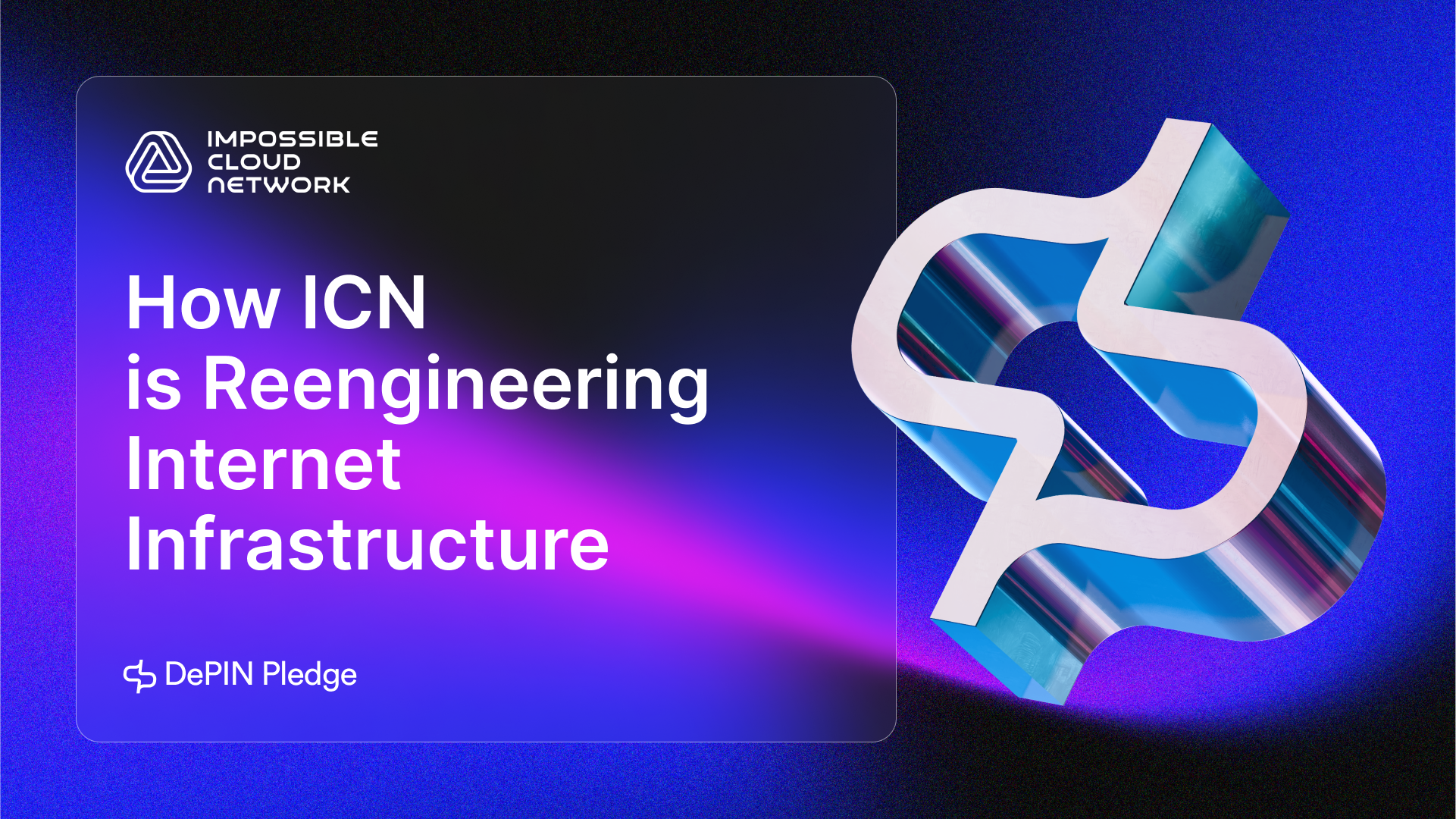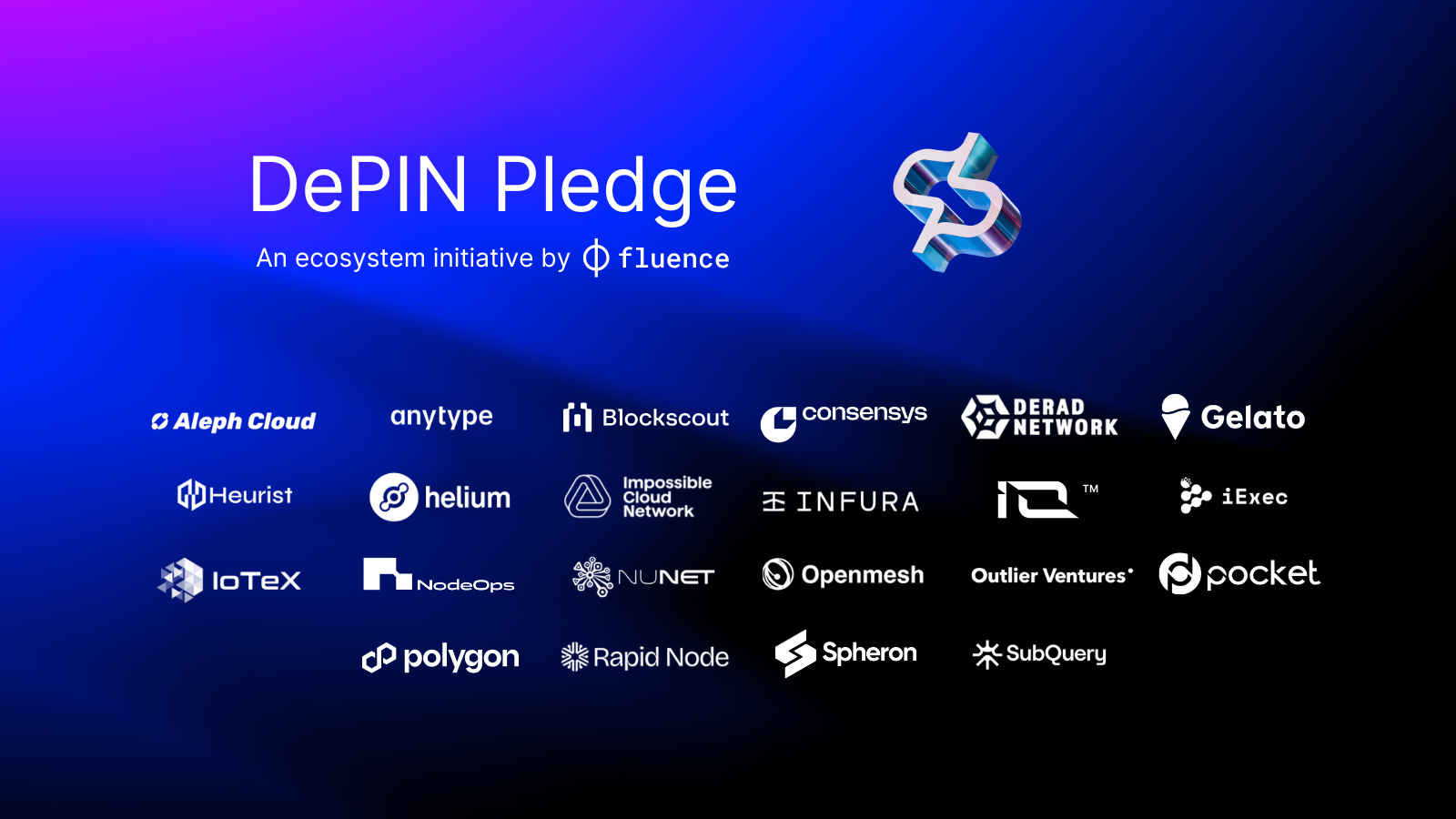Breaking the Cloud Ceiling: How Impossible Cloud Network is Reengineering Internet Infrastructure

A trillion-dollar question hangs over the future of computing: can the cloud be truly decentralized—without sacrificing speed, scale, or service?
Impossible Cloud Network (ICN) believes the answer is yes. But not with slogans. With systems.
As a pioneering pledger of the DePIN Pledge, ICN is supporting a new standard for cloud computing—decentralized by design. And that has implications well beyond infrastructure.
This article tracks ICN’s emergence as a leading force in the DePIN initiative. We’ll take a closer look at its hybrid Web2-Web3 strategy, technical progress, and ethical foundations that guide its unique approach to cloud architecture.
From Cloud Lock-In to Cloud Choice
Traditional cloud computing has a central problem: centralization.
Three hyperscalers—AWS, Azure, and Google Cloud—control over 65% of the global cloud market. They’re fast, scalable, and well-established. But they’re also closed, opaque, and capital-intensive. Developers gain performance but lose control. Enterprises benefit from uptime but face lock-in. And Web3 builders inherit a Web2 core.

ICN approaches infrastructure differently. It connects independent hardware providers through a decentralized protocol, distributing the economic burden and upside of owning data centers.
Its structure includes a compute and storage layer, a service layer backed by open-source software, and a monitoring layer using a HyperNode network to verify uptime and reliability. The result is a distributed infrastructure that meets enterprise performance standards with control allocated across the network.
This is already active. ICN has sold over 28,000 nodes worldwide, secured more than $5 million in annual recurring revenue, and supports customer uploads of up to 100 million files per day through its object storage platform. This isn’t a concept—it’s operational and scaling alongside demand.
The DePIN Pledge: Building Infrastructure With Accountability
The DePIN Pledge represents a larger call to action. It’s an initiative for infrastructure developers to reduce dependency on centralized platforms for compute, storage, and hosting.

ICN was among the first wave to endorse—and help craft—the pledge. Along with partners like peaq, IoTeX, and DePIN Hub, ICN co-founded the DePIN Association, which brings builders together through open collaboration, education, and events.
ICN maintains a practical hybrid: built on Web3, performing at Web2-grade standards. That balance sets it apart. It supports use cases ranging from crypto-native developers to large enterprises looking for improved economics, greater autonomy, and reduced vendor dependency.
Scaling Without CapEx: Practical, Distributed Infrastructure
Most cloud providers expand by acquiring or leasing more hardware. This prompts capital expenditure (CapEx) races—building data centers, securing GPUs, and increasing energy capacity.
ICN sidesteps this model by linking independent hardware providers through its protocol. Without owning any servers, it broadens its infrastructure horizontally across global contributors. This lowers CapEx while enabling resilient, distributed coverage.
This model is also well aligned. Contributors—whether offering compute, storage, or monitoring—receive fair and transparent compensation through protocol-based incentives. It creates a self-sustaining cycle:
- More contributors increase available capacity
- Greater capacity enhances performance
- Improved performance attracts more users
- Increased usage drives better rewards
ICN's approach already supports enterprise-scale use through its object storage product, which processes millions of uploads daily. Supported by high-performance vendors like Supermicro and real-time oracle-based monitoring, the system matches reliability with decentralization.
Standards Before Slogans: The Architecture That Delivers

ICN’s infrastructure isn’t a concept slide. Its three-layer framework delivers reliability, flexibility, and transparency:
- Hardware Layer – Independent providers supply compute and storage, enabling global scale without facility ownership.
- Service Layer – Open-source, modular software composes services across use cases—AI processing to cloud backups.
- Monitoring Layer – The HyperNode network tracks and verifies performance, ensuring providers meet consistent reliability benchmarks.
This design supports confidence comparable to leading centralized platforms while removing hidden risks. Developers can build with the assurance that the infrastructure functions as expected and is open to audit.
Performance alone isn’t enough. The architecture also enables accountability. Contributors—whether node operators or service partners—are evaluated by transparent criteria and measurable outcomes.
Building Infrastructure With Ethics at the Core
Not all decentralization promotes fairness. Open participation does not guarantee equity or accountability.
ICN builds infrastructure with accountability embedded from the start. Core principles include:
- Transparent rewards based on consistent contribution metrics
- Performance validation through real-time HyperNode network
- Community-led governance for open collaboration
- Ethical data use that prioritizes user control and verifiability
These aren't theoretical values. As regulatory and political concerns mount around global cloud infrastructure, ICN’s system offers a neutral and independently verifiable alternative. Technical credibility is supported by a codebase and incentivization model aligned with transparent participation.
Interoperable Infrastructure for Scalable Use Cases
ICN has broader ambitions than object storage.
Its longer-term architecture supports multiple use cases, including a stack capable of running decentralized AI workloads, managing smart systems, and enabling autonomy in machines and cities. This includes cloud-native orchestration, inference, analytics, and composable services that operate natively across a globally distributed network.
Practically, this supports use cases like AI models trained on decentralized data networks or autonomous systems exchanging data in real time. These outcomes sit within ICN’s roadmap and reflect where current development is headed.
Urgency for Aligned Infrastructure
Centralized cloud systems are under pressure—from rising costs to cross-border policy and compliance concerns. As demand rises across AI, autonomy, and user control, new infrastructure models need to keep pace.
ICN offers a model with working infrastructure, active customers, and transparent design. The aim isn’t to displace current cloud models through disruption. It’s to design infrastructure that is more transparent, composable, and collaboratively maintained.
For developers building decentralized services, for companies managing high-volume data growth, and for teams that value control without compromising performance—ICN offers a working model for open infrastructure with enterprise expectations.
A Web3 Call to Arms
Whether you’re building a decentralized application, running enterprise-grade deployments, or laying groundwork for AI, ICN’s framework outlines a new model of infrastructure for a distributed future.
A decentralized cloud can meet global performance demands without dependence on centralized services. For builders seeking infrastructure with reliability, transparency, and scale, clarity starts at the protocol level.
The DePIN Pledge marks more than just cooperation. It reflects an active alignment around scaling infrastructure beyond the constraints of centralization.
Join DePIN Pledge today.

